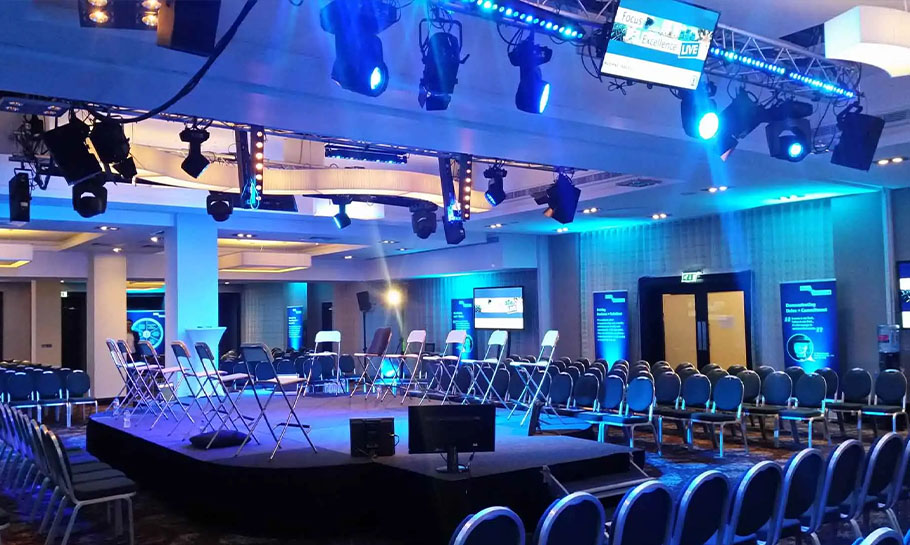Pre-Event Planning:
- Define Objectives:
- Clearly outline the goals and objectives of the event. Understand the type of content, level of interactivity, and technical requirements.
- Select Suitable Platforms:
- Choose the right platforms for your event. Consider factors such as the number of attendees, features needed (e.g., chat, Q&A), and platform stability.
- Technical Requirements:
- Determine the technical specifications, including audio and video quality, internet bandwidth, and compatibility with various devices.
- Create a Timeline:
- Develop a detailed timeline that includes pre-event setup, rehearsal, and the actual event. Allocate sufficient time for troubleshooting and addressing technical issues.
- Coordinate with Speakers/Presenters:
- Communicate technical requirements to speakers. Conduct rehearsals to ensure they are comfortable with the platform and understand how to use AV equipment.
- Engagement Strategies:
- Plan interactive elements such as Q&A sessions, polls, and audience engagement features to keep participants actively involved.
Equipment and Setup:
- AV Equipment Check:
- Test all AV equipment, including microphones, cameras, lighting, and displays, well in advance. Ensure they are in good working condition.
- Backup Systems:
- Have backup systems in place for critical components, such as backup microphones, power sources, and alternative internet connections.
- Technical Support Team:
- Assign a dedicated technical support team to troubleshoot issues during the event. Provide clear communication channels for participants to seek assistance.
- Accessibility Features:
- Implement accessibility features, such as closed captioning, for a diverse audience. Ensure your platform supports these features.
During the Event:
- Run Technical Checks:
- Conduct final technical checks before the event starts. Verify audio and video quality, test interactive features, and ensure all participants can access the platform.
- Technical Support Hotline:
- Establish a technical support hotline or chat for real-time assistance. Communicate this information to participants.
- Monitor Engagement:
- Monitor participant engagement, troubleshoot issues promptly, and address any technical glitches.
- Coordinate Breaks:
- If the event is lengthy, plan breaks to allow participants to recharge. Communicate the schedule in advance.
Post-Event:
- Gather Feedback:
- Collect feedback from participants and speakers to identify areas for improvement.
- Evaluate Analytics:
- Review analytics provided by the platform to assess attendance, engagement, and any technical challenges encountered.
- Post-Event Content:
- Repurpose content, such as recordings, highlights, and presentations, for post-event distribution. Share this content on social media or your organization’s website.
- Documentation:
- Document lessons learned and best practices for future events. This documentation can help streamline coordination for subsequent events.
Additional Tips:
- Contingency Planning:
- Develop contingency plans for unexpected issues, such as platform outages or speaker cancellations.
- Stay Informed:
- Keep abreast of new technologies and trends in AV events to enhance the quality of your future events.
- Security Measures:
- Implement security measures, such as password protection, to ensure the confidentiality and integrity of your events.
By carefully planning, testing, and coordinating each aspect of the AV events and conferencing process, you can deliver a professional, engaging, and technically sound experience for participants.









